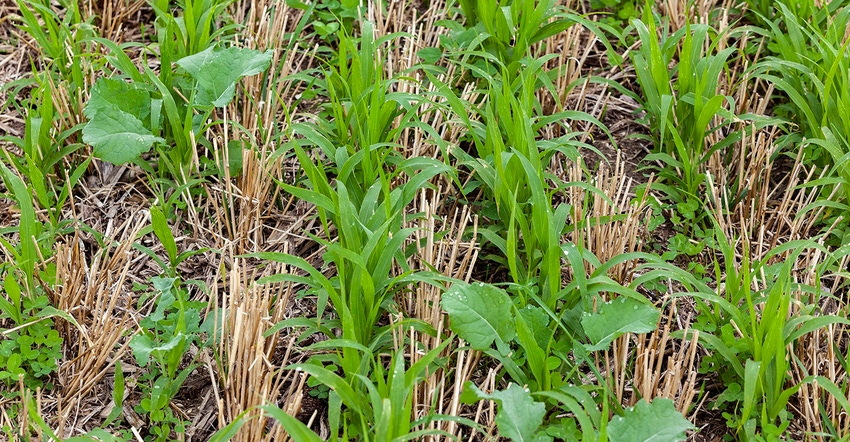
Experience matters when it comes to cover cropping, according to data shared during a recent Soil Health Partnership webinar.
The Soil Health Partnership "promotes the adoption of soil health practices for economic and environmental benefit." It was started as a partnership between the National Corn Growers Association, The Nature Conservancy, Bayer and the Environmental Defense Fund. The partnership has more than 200 sites in 16 states and almost half of the farms in the network have 2,000 acres or more, said John Mesko, SHP senior director.
"We have a wide range of experience in our farmers," he said. "Most of our farmers do have a fair amount of experience with no-till . . . but when it comes to cover crops a lot of our farmers have less than 10 years of experience and this is important . . . the longer someone is using some of these practices, the more efficient, more effective and more success they'll have."
Their data shows that, on average, experienced cover croppers spend less than recent cover croppers, defined as those who have five years' experience or less, on:
Cover crop seed ($12 compared to $21),
Planting ($6.58 compared to $8.79),
Repairs ($19 compared to $29),
Equipment ($25 compared to $51) and
Total fertilizer ($112 compared to $137)
Experienced cover croppers, those with five years of experience or more, spend more on burndown herbicide ($51 compared to $37).
In general, Mesko said that farmers with more than five years of cover crop experience are more profitable than farmers who have adopted cover crops more recently. For soybeans, he said, experienced cover croppers had some of the highest net returns in their survey. In their survey, experienced cover croppers and farmers utilizing conservation tillage without cover crops had equal net returns at $251. Recent cover crop adopters had the lowest net return at $123.
Cover crops have upfront costs that can't be ignored, Mesko said. About two thirds of the farms they are working with are participating in federal, state or local conservation programs and more than half are receiving a payment to plant cover crops.
"We think that's important because there are many different components that go into helping a farmer understand and decide how and when to implement one of these practices," he said.
Many supply chain partners are calling for farmers to change their practices, but there's not a concrete information on how to change those practices to achieve economic and environmental benefits.
Collecting data
The Soil Health Partnership is collecting yield data directly from the combine yield monitor and analyzing it. In 2020, SHP had 112 field checks. The process is standardized, with yield data cleaned to remove features such as end rows and waterways, data near strip or treatment boundaries and data that are likely to contain errors because of combine speed.
In 2019, the analysis found no evidence of a yield bump or yield drag from the use of cover crops, however, there was a large difference in yield outcomes across farmers. Factors that may impact yield include seeding rate of cover crop, when the cover crop was terminated and the cover crop species that was planted.
Mesko said those results have pointed to new research questions: What is the right amount of cereal rye to plant? What is the right mixture? How do growers maximize soil health benefits with yield benefits?
His goal is to get to the point where the SHP can use its data to advise farmers how to meet farmland goals using cover crops.
About the Author(s)
You May Also Like




